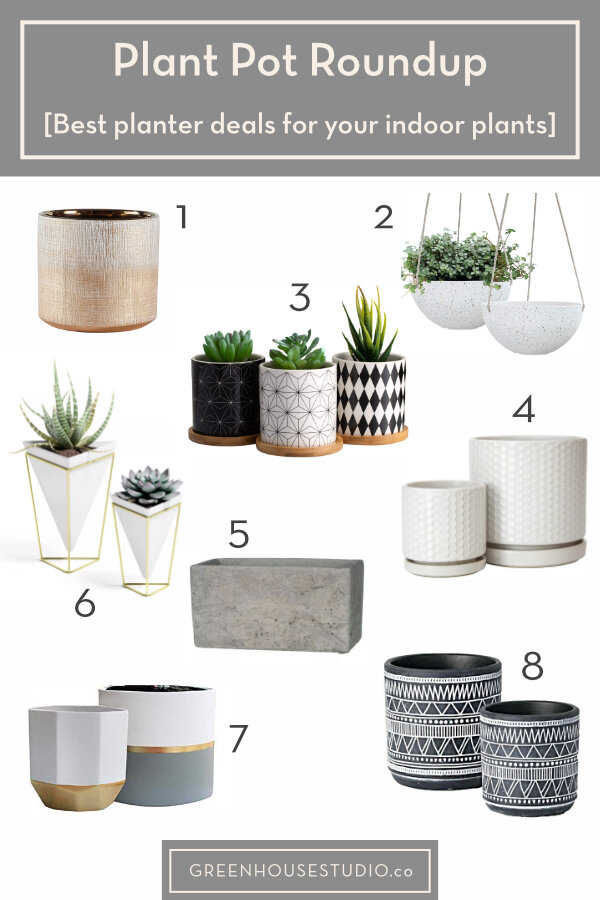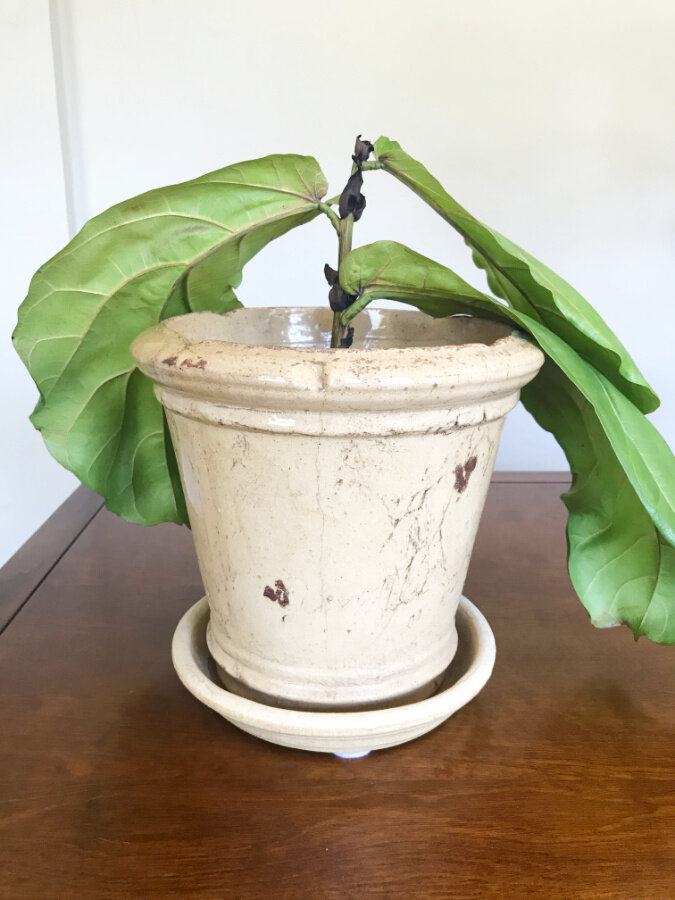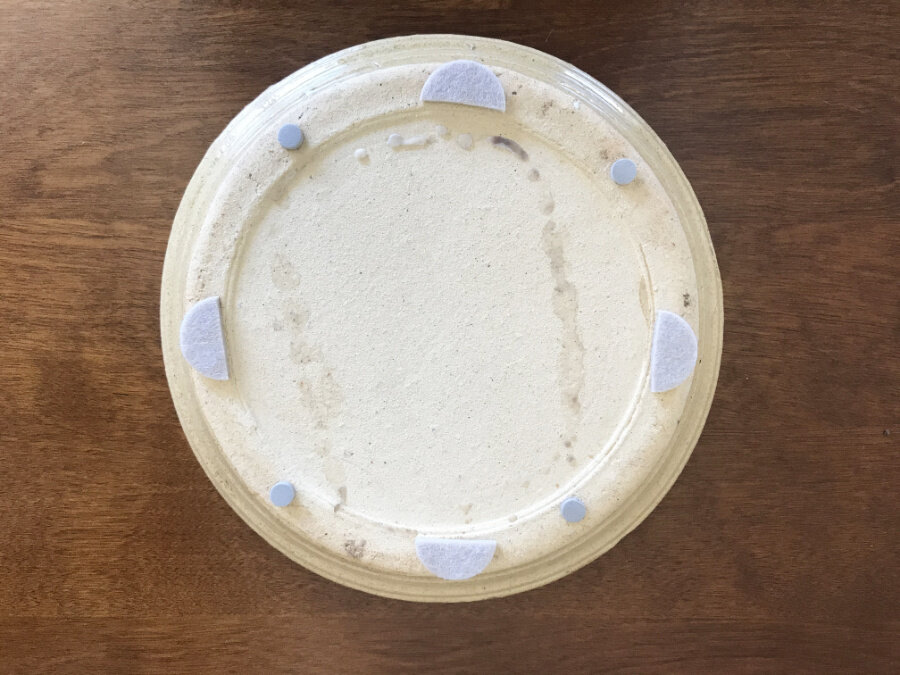Best indoor plant pots based on how you like to water
Ever bring home a new favorite plant (just. one. more. I swear.) but then you realize you don’t have a good pot for it? If you’re anything like me, you’re not happy with your new plant sitting in it’s plastic nursery liner for long.
I want my plants in a pot that looks great with my home decor, and a collection of plastic nursery pots doesn’t cut it. So I’m always on the lookout for attractive and reasonably priced planters, pots, containers - whatever you want to call them, for my ever-expanding plant collection.
Let’s look at some great pots that are all reasonably priced and will beautifully showcase your favorite fronds. (In fact, most come in sets of two!)
Then we can talk about how to pick the right pot according to how you like to water your plants, plus pot drainage workaround tips.
[This post contains affiliate links. Click here to read my full disclosure.]
Planter selection pro tips
Watering preferences
Before we get too far into pot shopping, can we talk drainage strategy for a minute?
People have different preferences for how they like to containerize their plants. Before buying a pot, think about how you like to water. Let’s go over a couple ways:
Option 1 - Pot with drainage holes and saucer
Some like to have drain holes in the pot and keep a dish underneath and water the plant in place.
This allows you to plant directly in the pot and maximize all the space in your container for plant growth. You also don’t ever have to move the plant. (Except to rotate it once in a while for even growth, but that’s a different post.)
A rustic pot and saucer combo holding my Fiddle Leaf Fig cutting.
Option 2 - Plastic nursery liner inside a pot without drainage holes
I prefer to have a non-draining decorative pot with a plastic nursery pot liner inside that you can either water in place or pop out, water the plant in the sink, and put back in.
I prefer not to have to worry about over-watering and damaging whatever furniture or flooring is underneath if the saucer happens to spill over (or gets kicked in a house with 3 boys).
Also, I like to be able to easily wet down the plant in the sink once in a while to rinse dust and saturate the leaves.
Either way works of course, just keep it in mind when pot shopping and check out the drain hole situation.
It you want drain holes, then you’ll need a saucer hopefully about the same size and color etc as the pot. Not always easy to pull off.
If you don’t want drain holes, you’ll need a liner that fits. This can be a challenge, trust me - especially since I want to maximize every bit of grow space I can for my plant. (I keep every liner I get from my plant purchases - wash with a solution of 1 part bleach to 9 parts water for disease control.)
My new Monstera deliciosa is in it’s original nursery liner inside of this gray pot. I pull it out to water and wet down the foliage.
Saucer-free Monstera - this plastic liner is the rare perfect fit in the pot. (Try to ignore the painters tape on the wall - I’m mocking up new hanging shelves to hold - you guessed it - more plants!)
Pots with open drainage to saucer
Pros - maximize pot real estate for plant growth
Cons - need to buy a saucer, and water could spill over and damage surface underneath which can make it tough to thoroughly water your plant.
Decorative pot with no drainage
Pros - can easily and thoroughly (foliage included) water the soil and plant in the sink or outside with a hose in the light-weight plastic liner.
Cons - have to find a plastic liner to fit and it rarely uses all the space in the decorative pot so plant doesn’t have as much grow room.
Want more info? Here’s an in depth post on how drainage works in a container.
Planter Workarounds
Sometimes you find a pot you just love, but it doesn’t have the drainage situation you want. I have workaround solutions for you!
The pot has drain holes and you don’t want
Sometimes, if you’re lucky, your pot comes comes with a drain hole and a plug. (See the pots below for this option.) I’m seeing this more and more often now, which makes me happy.
Otherwise, buy a clear plastic nursery saucer at a nursery/home improvement store and put it inside the pot. They’re thin and inexpensive so I sometimes double up just in case.
They also make extra deep ones so you can really water in place and get the soil thoroughly wet without worrying about spilling over. These are ideal.
The pot doesn’t have drain holes and you do want
If you have access to a drill, buy a ceramic drill bit and drill through the ceramic pot to make your own drain holes.
If it’s metal, you can take a hammer to a large nail and punch it through in a pinch. Do it a few times so the drain hole is big enough.
Final plant pot tip
No matter what, I always, always put pads on the bottom my pots to protect the surfaces underneath from scratching.
I have to confess, I’m kind of obsessive about my protective pads - always looking for new ones in different materials - felt, foam, cork etc.
I have this furniture protector variety pack from Amazon which I’m more than half way through. Here's a quick DIY about using protective pads on odd shaped objects.
Just remember if they get wet to let them dry before putting them back on your furniture or wood floor.
Protective felt pads for your plant pots and saucers to prevent scratching - don’t forget this important step!
OK now that we’ve talked about figuring out the best type of planter based on your watering technique, let’s circle back to those beautiful pots - happy planting!
[Want more design inspo and helpful plant tips? Let's hang out on Instagram!]
Other posts you’ll love:
How to choose the right pot for your plant [Why pot shape & size matters. A lot.]
How To Waterproof Your Plant Pots [5 Minute DIY]
Monstera Deliciosa Care Guide + Design Tips
Easiest 5 Houseplants For Beginners
DIY Trellis for Climbing Indoor Plants
Enjoy the post? Pin it for later!





